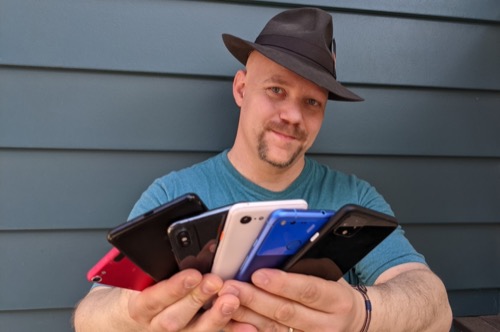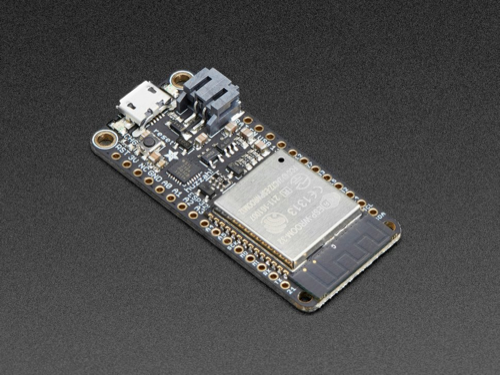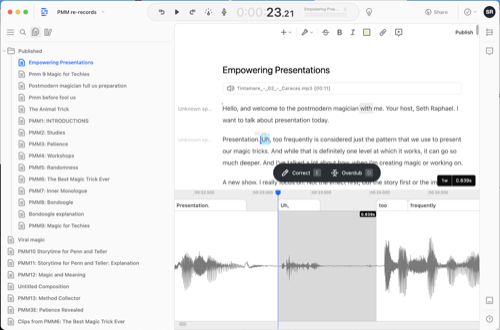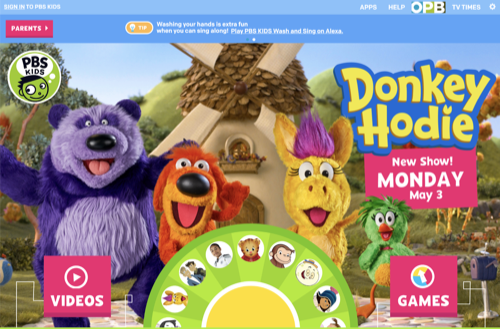Seth Raphael, Hi-Tech Magician

Cool Tools Show 281: Seth Raphael
Our guest this week is Seth Raphael. Seth is a modern day Robert Houdin, combining cutting edge technology with age-old magic techniques to push what’s possible and elicit wonder. He studied magic and technology at MIT and companies like Disney and Google hire him to help envision the future. You can find Seth on Twitter and Patreon @magicseth.
Subscribe to the Cool Tools Show on iTunes | RSS | Transcript | See all the Cool Tools Show posts on a single page
Show notes:
A sense of possibility and a passion for wonder.
This is actually a mindset. And I know it’s a little unconventional, but for me, I feel this is the thing that keeps me creating. It’s a dual mindset that is, first, just a sense of possibility and, second, a passion of wonder. And when I say a sense of possibility, it means something that I get from being a magician, which is a magician never thinks about something and thinks, “Oh, that’s impossible.” They think, “Oh, that’s impossible. Let me do it.” It’s something that I saw a pattern with my dad. He would patch walls, even though that wasn’t his day job. Anything that needed to be fixed, he would say, “Okay, we’re just going to do it.” And he would get out a tool, and somehow began this wealth of knowledge of how to fix things. And it really instilled in me a belief, oh, if there’s a challenge, if there’s something broken, I can fix it. I can learn how to. And even if I don’t succeed, mistakes are part of our growth. And if I screw it up really bad, I can maybe hire someone to help me patch it up. Then the second part is just this constant seeking out of wonder. I, at MIT, developed a model of wonder and where it comes from. And for me, I think it boils down to this experience of something unexpected that breaks your mental model of the world, and it gives you this little dopamine rush. And sometimes that can lead you to be afraid if it’s something scary. But if it’s not something scary, there’s an opportunity for it to open your mind and just give you this exciting glimpse at a world that is suddenly bigger than it was a moment ago. For me, this came from my mom. I remember, as a child, her talking about the beauty all around of us and just how amazing our hand is. If everybody could just look at your hand and understand really how wonderful and how amazing it is that you can control this thing and that it grows from an egg into a human, and the world would just be a much more peaceful and happier place if we had that mindset.

Adafruit HUZZAH32 – ESP32 Feather Board
Well, this is a tool that I use, not just in magic, but also in my technology development, because I also work in developing products that are technology products. And it’s the Adafruit HUZZAH32, which is based on an ESP32 chip. And it’s a microcontroller. It’s a tiny little board. You could hold it in the palm of your hand. You can plug it into your USB slot on your computer and charge it, or you can plug it into the wall. And it’s just this unassuming little thing. It costs about 20 bucks. And for those who don’t know, you take a microcontroller on a board and you give it power, but then you have to connect it to something in order for it to either see or sense the world or give you some sort of output in the world. And the beautiful thing about this particular board is Adafruit, the company that makes it and designed the Feather platform that it is built on, they have things that you can just sort of plug into it. You can plug in a speaker, and suddenly this chip is now playing music. Or you could plug in LEDs or motors and make things spin and whirl and light up, and you can plug in all kinds of sensors. I used this very chip with my kid. We were having a conversation about yelling, and he was like, “I don’t yell.” I was like, “Well, let’s build something to see if that’s true.” So we took this chip, and we wired up a little microphone and a little old cellphone vibrating motor. And now suddenly, he has something that he can wear around his neck, and it vibrates on him when he’s yelling. It was like, “Oh.” We’ve realized, okay, the way we perceive our own voice is not necessarily the way other people will hear it.
Javascript
JavaScript is a programming language, and most everybody who has used the internet has used JavaScript because it’s the language that powers your websites. I learned JavaScript many, many years ago, and one of the things that made it originally so exciting was you could look at any webpage and basically peel back the hood and see the code underneath of it. You could copy the bits that you thought were interesting. You could tinker with it and change it. And over the years, it has stuck as one of the most flexible languages that I know. I use it when I’m making a new magic trick frequently to write a proof of concept, and it can run in your browser. And it has gotten to the point where now servers can run JavaScript too, and you can run all the code on the front end and the back end. With something like JavaScript, you could take the New York Times, pop open an article, and you can change it right in your browser without having to do anything on the server end. And now I could make perhaps a New York Times article that said, “The best new podcast Cool Tools with Mark and Kevin is featuring Seth Raphael.” And I could make a screenshot really quickly and send it to my friends. It’s the closest thing to scissors and razors and duct tape on the internet and on computers. So that’s why I love JavaScript.

Descript
I found a great method for both learning about things, but also sharing, is through podcasts. And podcasts is really, as we’re doing right now, just fundamentally recording an audio conversation or a transcript. But once you’ve done that, you’re left with this pile of waveforms on the computer. You’ve got to make sure all the levels are good. You’ve got to make sure that there aren’t any pops or clicks, that your background music comes in nice, if you have that, or themes. And that is a lot of work and can be one of the big bottlenecks in trying to create a podcast. And I found a tool called Descript that has really transformed the way I am able to produce. Descript takes your audio and turns it into a text document. So it’s almost like you’re looking at a Google Doc or a Microsoft Word doc on your computer, where it has taken your words, transcribed them into text, and you have a document right there. And anytime you click on a word and press play, it will play exactly what you spoke. That means suddenly editing is really just like using a word processor. You delete the word uh. You drag this segment up to the other segment. And you’re moving the waveforms under the hood, and you can play it back and hear how it sounds. You can add space in between words. You can change the timing. There is even a feature now where you can train it on your own voice, and if you misspoke a word or want to add a word, you just type it in and it uses deep learning algorithms to generate the new audio for you in your voice.

PBS kids
This is all the shows that PBS, the Public Broadcasting Service in the United States, makes for kids. If people remember Mr. Rogers, there’s now an animated version called Daniel Tiger. It includes something called the Odd Squad, which was a really silly kids pretending like they’re detectives in the show, and they solve math problems to capture villains. I’ve got a range of kids from just about 10 down to three right now. And I struggle because the internet is such a big, untamed place. It’s not quite ready for kids. And PBS has been a place where I’ve found every show to just be safe, and I guess PBS Kids is an example. But the real tool is finding trusted environments where you know that everything has been curated and your kids are going to have the ability to grow. So my ten-year-old isn’t only going to be able to watch PBS Kids. But even something like YouTube Kids has such a wide variety. It’s difficult to really line that up with what you are hoping your kids take from the world. It’s a website. They also have an app. So if you want to give them a tablet or a phone, they can just pick the shows they like.
About Seth’s Patreon:
I just love making new magic. I can’t stop, and it’s like the lens I look through the world. No matter what I’m discovering, my first thought is, “Wow, how could I use that for a magic trick, or what would a magic trick be?” And I decided to share relatively recently some of the effects that I’ve created, the magic experiences that I have designed, and I put them up on Patreon. And every couple of weeks, I put out a podcast describing how my theories about magic relate either to technology or to magic. And I actually give people the ability to try some of my magic and actually perform it. An example is an effect called strange-flavored spam, and this came from my design process. And my design process is to think about what’s the experience or the emotion I want somebody to have, or what’s a universal experience that would touch a lot of people? And I came to the realization, hey, everybody gets spam calls and we all hate them. What if they were a little bit more magical? So a strange-flavored spam, let’s imagine that we were hanging out one night, and we had been discussing a concept, maybe Pastafarianism. Suddenly, my phone would ring, and I’d say, “Oh, no, it’s the spammers again. They’re getting really specific.” I’d put it on speaker phone, and it would start to talk about rebalance your credit card today and get a free Pastafarian T-shirt. So as Ferdinando Buscema would say, “We’re playing on that magical experience sign.” Is it real? Is it not real? It could be real. We are there. Are we living in that reality? Will we soon, or can we avoid it? So that’s an example of a magic trick that I share with my Patreons.









